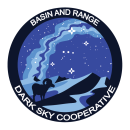Night Skies as a Natural Resource
National wildlife refuges help to preserve the continuation of natural processes. This includes allowing bears to roam, letting rivers run free of dams and diversions, and understanding the beneficial roles that fire can play. A dark night is a resource integral to many natural processes. Many of the darkest night skies in the country are found within national wildlife refuge national wildlife refuge
A national wildlife refuge is typically a contiguous area of land and water managed by the U.S. Fish and Wildlife Service for the conservation and, where appropriate, restoration of fish, wildlife and plant resources and their habitats for the benefit of present and future generations of Americans.
Learn more about national wildlife refuge boundaries. With the loss of night sky quality over the last five decades to light pollution, this resource has become nationally significant.
Generally, dark night skies are considered as a scenic resource, valued by amateur astronomers as well as casual stargazers. Sometimes forgotten is the importance of natural darkness for wildlife. Nearly half the species on Earth are nocturnal—active at night instead of during the day. The absence of light, natural or otherwise, is a key element of their habitat. Many species rely on natural patterns of light and dark to navigate, nest, mate, hide from predators, and cue behaviors.
Adding artificial light to natural habitat may result in substantial impact to certain species. For example, migrating passerine birds reference stars to fly at night and can be disoriented by city lights and towers. Sea turtle hatchlings orient toward the brightest light on the beach, but instead of being drawn to the safety of sparkling waves on the ocean, they are often drawn toward roads and parking lots, where they quickly perish. And amphibians, with vision far more sensitive than that of humans, are prone to be disoriented by light. Changes to cave environments can have a similarly disruptive effect. Research into the ecological consequences of artificial night lighting is revealing numerous connections between light pollution and species disruption.
Dark night skies are also considered an air quality related value under the 1977 Clean Air Act Amendments, and air quality in turn affects the quality of the night sky. Just as air pollution decreases the visibility during the day, hazy air at night dims the stars and scatters more light from cities, resulting in a gray appearance to the night sky instead of sparkling stars on a black canvas.
Dark Sky Refuge
Even though Desert NWR is an urban refuge, it has remarkably dark skies. The refuge is looking into certification from the International Dark Sky-Sky Association, but it is not yet accredited.
Light Pollution
As urban areas grow and the use of artificial outdoor lighting increases, night skies brighten and stars fade from view. Most people can't see the Milky Way from where they live and they may never see it in their lifetime! Refuge staff work to ensure that refuge facilities do not produce any additional light pollution. Luckily, places such as Desert NWR have worked hard to protect darkness for all to enjoy.
Although it may be difficult to see the night sky where you live, the encouraging news about light pollution is that it is reversible and you can help! Consider taking these simple steps at your own home to help bring dark skies like those in Desert NWR back to your community:
- Install lighting only when and where it's needed
- Use energy saving features such as timers and motion sensors on outdoor lights
- Shield your lighting so it only shines downward
- Share with friends, neighbors, and coworkers about how they can help
Resources
For more information, please contact the Basin and Range Dark Sky Cooperative, or refer to Rich and Longcore's 2006 book, The Ecological Consequences of Artificial Night Lighting.



